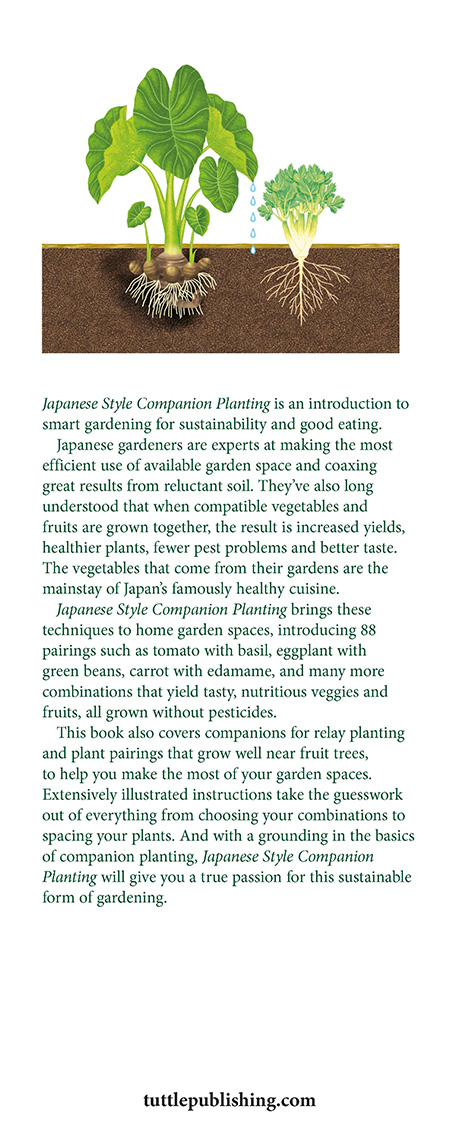
Japanese Style
Companion Planting
Organic Gardening Techniques
for Optimal Growth and Flavor
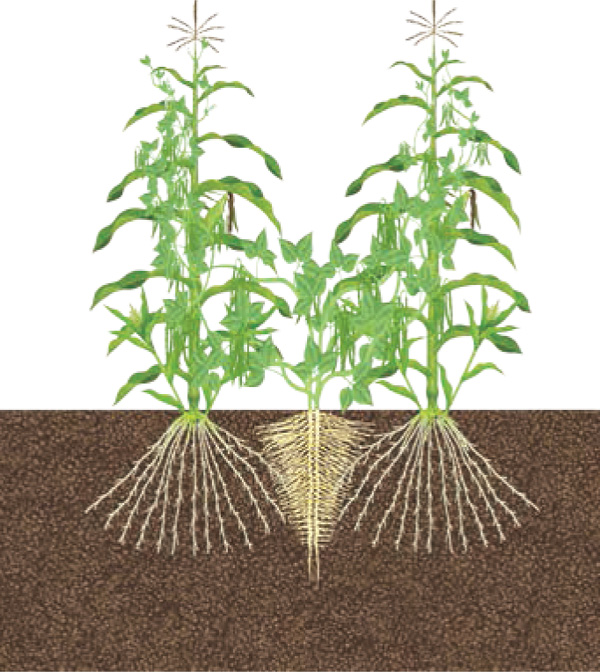
Toshio Kijima

Choosing Companion Plants to Grow Delicious Vegetables
A Symbiotic Relationship
Companion planting is a cultivation technique that is crucial to growing healthy and delicious vegetables without relying on pesticide or chemical fertilizer.
Many plants naturally compete against each other within the limited space available in order to receive the most benefits. However, it is rare for a plant to completely dominate a given spaceplants find a way to coexist, splitting spaces via root depth, height and other factors.
There are many advantages to different types of plants growing together. First, plants gathering together can avoid rain and wind and prevent soil erosion. Second, cultivating different plants diversifies the environment and can minimize disease and pest damage. Third, plants create a network of nutrients through their bacterial thread to enhance each others growth.
Although it seems that plants tend to compete against each other to survive, plants can coexist and even develop a win-win relationship by having a positive influence on each other.
Companion plants: Experience and knowledge put together
It has long been known that these phenomena occur, and this knowledge has been applied to farming for ages, especially on Asian farms where space is often limited.
Nowadays, mixed cultivation of scallions with cucumber or pumpkin is widely practiced around the globe. This was originally inspired by traditional farming techniques in which farmers in the Tochigi Prefecture prevented repeated cultivation damage by planting scallions with white-flowered gourd, a Liliaceae plant. When this method was studied scientifically, it was discovered that scallions have rhizosphere microorganisms that release bactericidal agents. Upon further investigation, it was discovered that other Alliaceae plants also have the same microorganisms, and that you could apply the same knowledge to different plant combinations. For example, tomatoes or eggplants work well with garlic chives, while strawberries work well with scallions.
Although there are many plant pairings like the ones discussed in this book, few have had scientific explanations as to why they make good combinations. You could say that companion planting is a result of many years of experience and knowledge put together. If each combination has clear benefits, and those benefits can be recreated in different places and at different times, then theres no reason not to apply this knowledge to your own food gardening! Lets grow healthy and delicious vegetables in confined spaces by making the best use of the plants nature and innate power.
Toshio Kijima
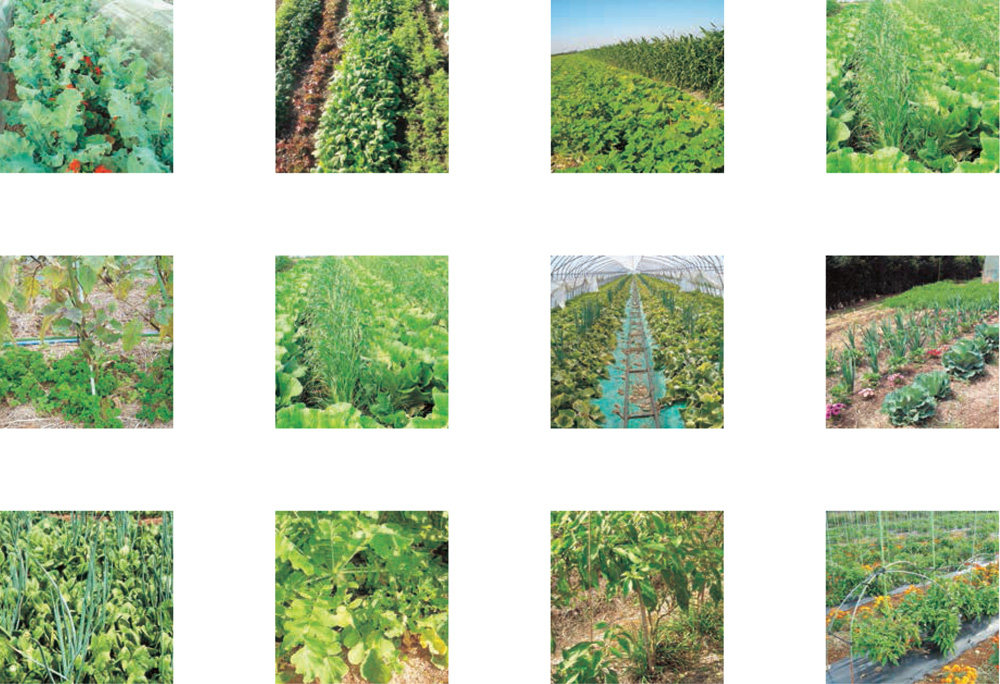

What is Companion Planting?
The Four Benefits
Companion plants are the plants that grow well when planted in close proximity to each other. In Japanese, the word can be literally translated to Mutual prosperity plants; however, while there are plants that are mutually beneficial, there are some combinations in which one plant serves the other, but receives no benefits. The benefits of companion plants can be sorted into four categories. There are plant combinations that fit in multiple categories.
 Prevents Disease
Prevents Disease
Get rid of antagonistic bacteria using the power of microorganisms
Alliaceae plants such as scallions and garlic chives have microorganisms on the roots that release an antibiotic substance that can reduce the risk of diseases for Cucurbitaceae/Solanaceae plants.
Example: Cucumber x Scallions, Tomato x Garlic chives, Strawberry x Garlic, etc.
Use mycoparasites to prevent diseases
Plants such as barley and oats commonly suffer from powdery mildew. Certain plants increase the number of mycoparasites that are attracted to the mildew bacteria.
Example: Cucumber x Wheat, Grape x Oat, etc.
 Repels pests
Repels pests
Get rid of pests using scents and colors
Plants develop a defense mechanism in order to avoid being prey to insects. Through stages of evolution, some insects gained the ability to neutralize toxinsthese are the insects we call pests. However, pests are tolerant only of the toxins from certain kinds of plants. They determine whether a plant is dangerous to them by the plants smell or its color. You can confuse insects when you grow different types of plants together.
Increase the number of natural enemies
While pests are attracted to only certain types of plants, their enemies (also called beneficial insects) tend to eat a wide variety of pests. Banker plants take advantage of this phenomenonyou can reduce the number of pests on vegetables by cultivating another type of plant that can attract beneficial insects.
 Speeds up growth
Speeds up growth
Get positive results from giving your plants an appropriate level of stress
When different types of vegetables are grown near each other, plants grow taller than usual, or you can increase the size of the harvest. The roots of each plant enhance the others growth, making it easier for roots to absorb water and air. It is also suggested that the substance released from the leaves, stems and roots, or the microorganisms on the roots, induce better absorption of nutrients. As companion planting gives an appropriate level of stress to the plants, they sometimes grow more flowers or become stronger against climate change or pests. Also, Fabaceae plants have microorganisms that can enrich the soil and enhance another plants growth.
 Efcient use of space
Efcient use of space
Grow more than one plant in the same space
Efficient use of space is one of the biggest advantages of companion planting. If the plants can grow well together, you can grow them in the same space. This follows an old Japanese principle that you can only fit so many walnuts in a bowl, but the spaces between the walnuts can hold grains of millet. You can grow another type of plant using bits of open space in a planter or bed. This is especially useful for farming in a place with limited space, like a kitchen garden.

Maximize the Benefits!
Basics and Tips for Cultivation
In order to maximize the benefits of companion plants, you need to manage the cultivation period, distance between plants, and plant species. Through gaining experience, you can find your own way of using companion plants. Here, we will explain the basics and tips of companion plant cultivation by splitting the method into three patterns.
Next page

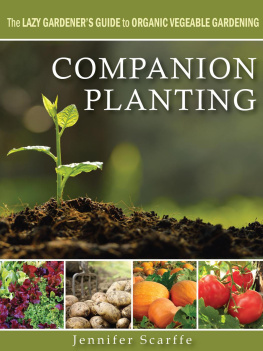
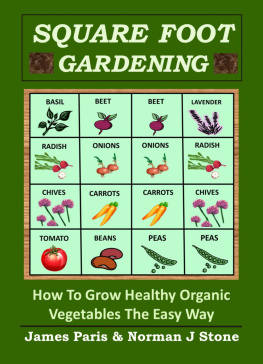











 Prevents Disease
Prevents Disease Repels pests
Repels pests Speeds up growth
Speeds up growth Efcient use of space
Efcient use of space